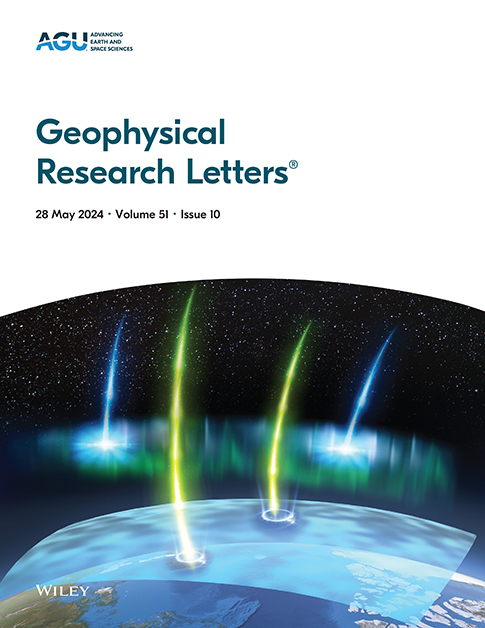解开晚古生代冰期的大陆风化
IF 4.6
1区 地球科学
Q1 GEOSCIENCES, MULTIDISCIPLINARY
引用次数: 0
摘要
大气中二氧化碳通过大陆风化作用的消耗在塑造晚古生代冰期(LPIA)的演化中发挥了关键作用,这可能是由海西造山运动和陆生植物的演化所驱动的。然而,这两个主要驱动因素对大陆风化的相对影响仍然知之甚少。华南地块位于古赤道附近,在晚古生代相对稳定的构造环境下,因此为硅酸盐风化动力学提供了有价值的见解。在这里,我们报告了中国南方一个连续沉积的斜坡演替的60 - Myr长的蚀变化学指数(CIA)记录。通过综合已有的风化指标记录,我们得出结论:海西期造山运动在333-291 Ma期间对硅酸盐风化速率的增强起着压倒性的作用,而古热带森林生态系统在其快速扩张阶段(333-316 Ma)对风化模式的影响显著。本文章由计算机程序翻译,如有差异,请以英文原文为准。
Disentangling Continental Weathering During the Late Paleozoic Ice Age
The consumption of atmospheric CO2 through continental weathering played a critical role in shaping the evolution of the late Paleozoic Ice Age (LPIA), presumably driven by the Hercynian orogeny and the evolution of terrestrial plants. However, the relative impacts of these two major drivers to continental weathering remain poorly constrained. The South China Block was located near the paleo‐equator under a relatively stable tectonic setting during the late Paleozoic, and therefore provides valuable insights into silicate weathering dynamics. Here, we report a 60‐Myr‐long record of the chemical index of alteration (CIA) from a continuously deposited slope succession in South China. By integrating existing records of weathering proxies, we concluded that the Hercynian orogeny played an overwhelming role in enhanced silicate weathering rates during 333–291 Ma, whereas paleotropical forest ecosystems demonstrated their significant influences on weathering patterns during their rapid expansion phase (333–316 Ma).
求助全文
通过发布文献求助,成功后即可免费获取论文全文。
去求助
来源期刊

Geophysical Research Letters
地学-地球科学综合
CiteScore
9.00
自引率
9.60%
发文量
1588
审稿时长
2.2 months
期刊介绍:
Geophysical Research Letters (GRL) publishes high-impact, innovative, and timely research on major scientific advances in all the major geoscience disciplines. Papers are communications-length articles and should have broad and immediate implications in their discipline or across the geosciences. GRLmaintains the fastest turn-around of all high-impact publications in the geosciences and works closely with authors to ensure broad visibility of top papers.
 求助内容:
求助内容: 应助结果提醒方式:
应助结果提醒方式:


